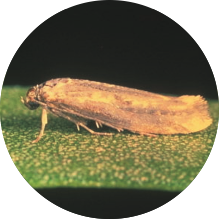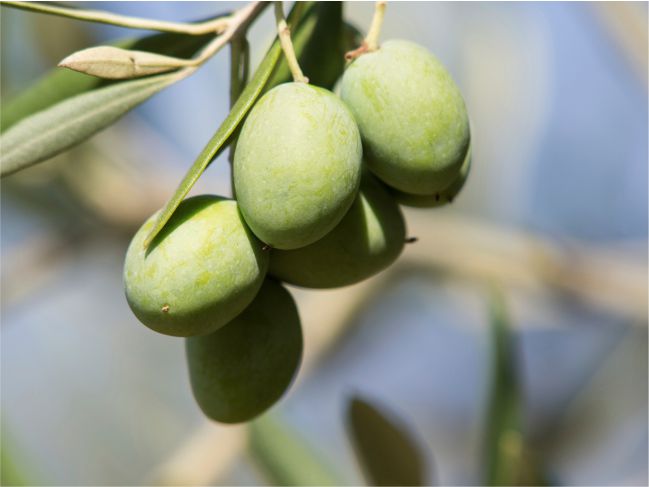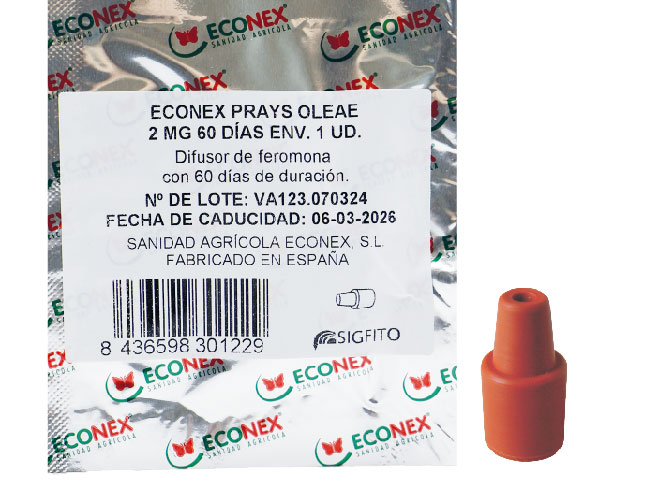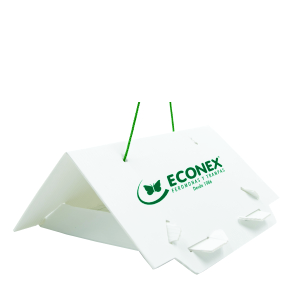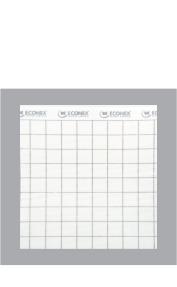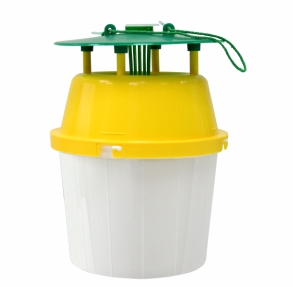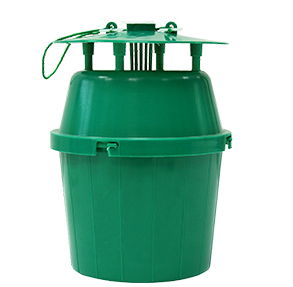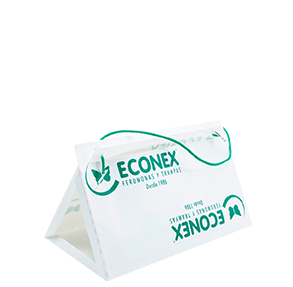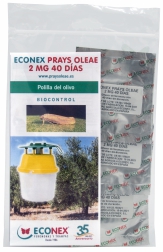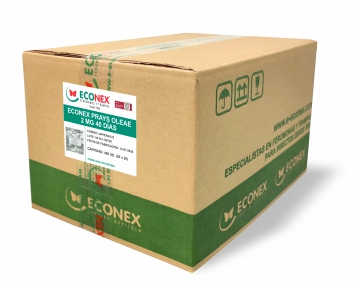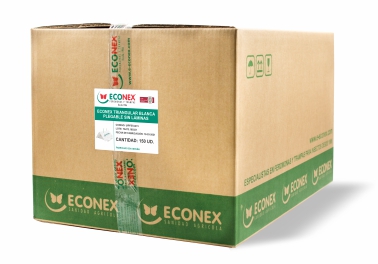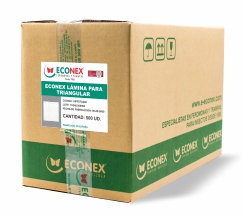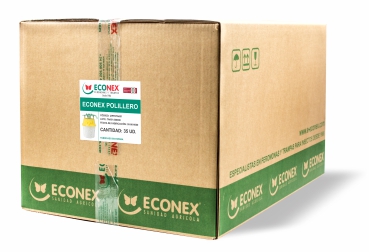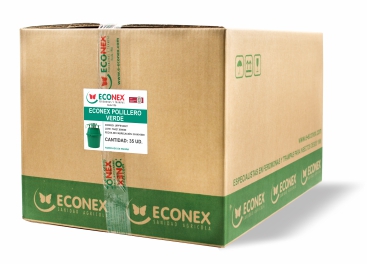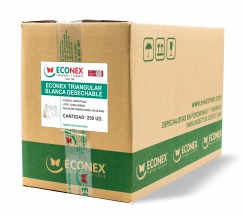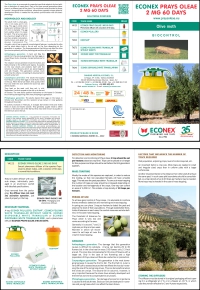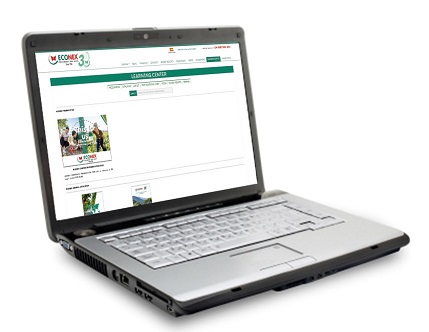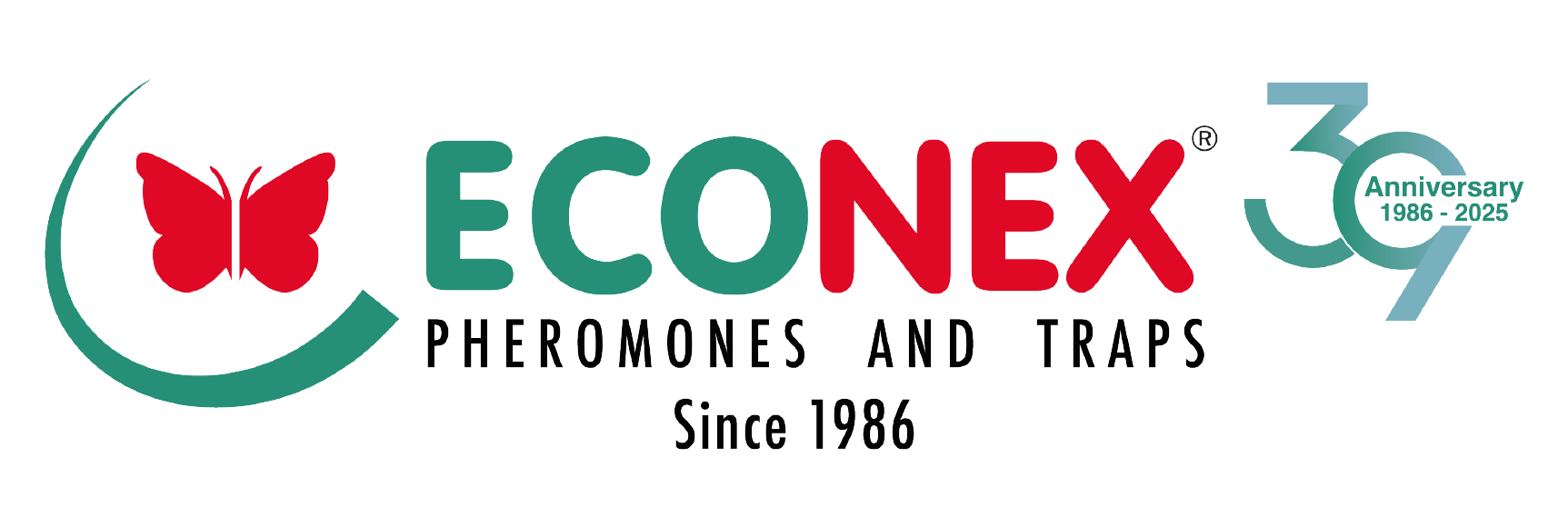Morphology and biology
The adult is a silver-grey moth with a wingspan that is 13-14 mm wide and 6 mm long. The egg is lenticular, flat, 0,5 mm in diameter.
It is also a whitish colour when recently laid, which turns to yellow when hatching.
The larva grows to 8 mm when fully developed and varies in colour, predominantly brown and green, but always in light tones.The chrysalis, with no specific morphological characteristics, is protected by silks and plant or earth remains both in the aerial parts of the plant and in the soil, depending on the generation in question.

The three generations that follow throughout the season are perfectly synchronised with the phenological evolution of the olive tree:
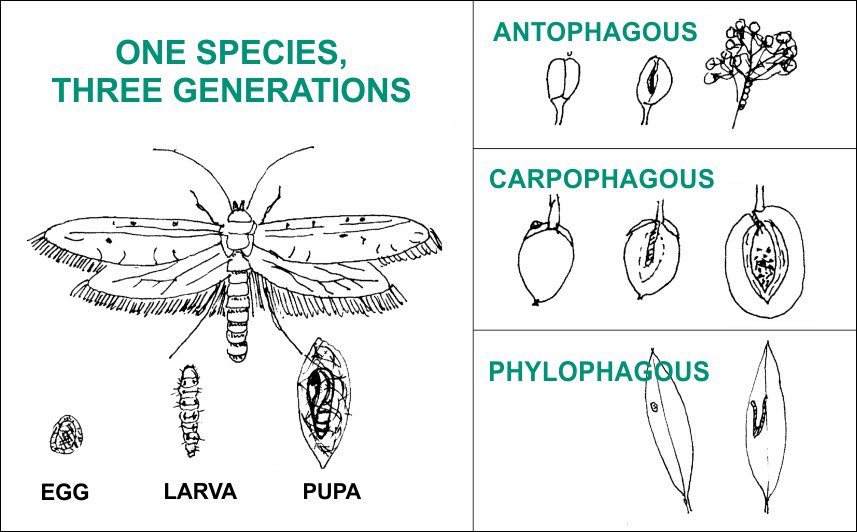
Anthophagous generation: In April and May, the adults that come from the previous generation lay their eggs inside the closed flower buds and with a clear preference for the calyx.
The neonatal larvae penetrate the bud and feed primarily on the anthers and stigma. They pupate inside the fruit-bearing buds, protecting themselves with the remains of dried flowers that are joined by silk threads.
This generation is the fastest to evolve, completing its development in a month and a half.
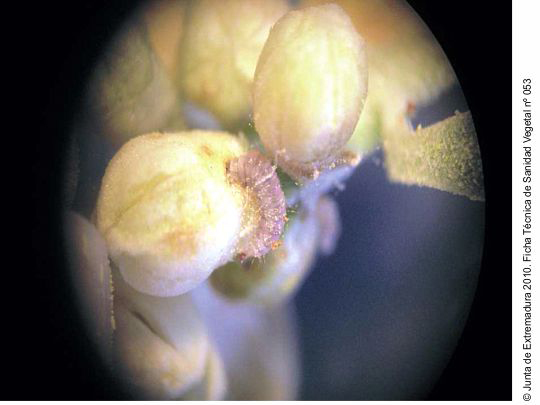
Larva feeding on a flower
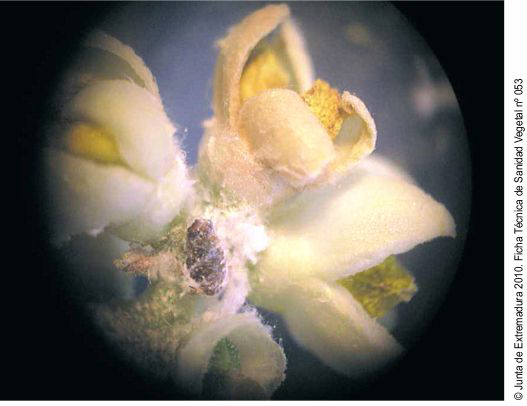
Chrysalis inside a flower
Carpophagous generation: : The adults that appear from May to June, lay eggs on the small fruits, mainly in the calyx. When the larvae hatch, they directly perforate the fruit and enter inside the olive before the stone hardens.
They feed on the seed until mid-September, when they start to emerge from the olive to pupate in the ground, a period that lasts until the end of October. The new adults lay their eggs on the leaves (October) starting the phyllophagous generation all over again.
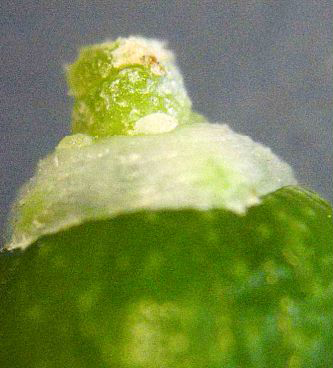
Egg laid on an olive (small image)
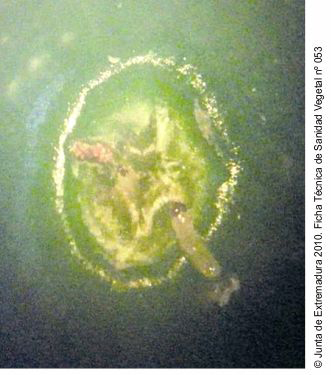
Penetration beginning inside an olive
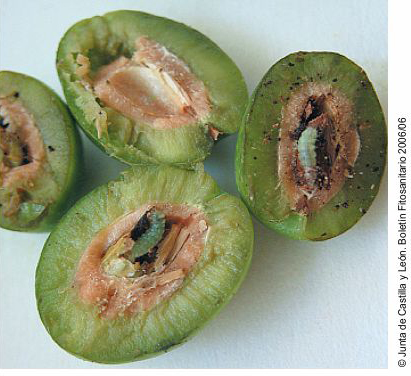
Damage to the olives
Phyllophagous generation: The adults, during October and November deposit their eggs on the leaves and the newly born larvae remain inside the interior galleries during Winter.
In February their activity increases, in which they change leaf several times. Finally, they feed on buds and leaves on the outside.
Predominantly, they pupate on the underside of leaves and on the inside of silky buds, although they can do the same on tree trunks and in the ground.
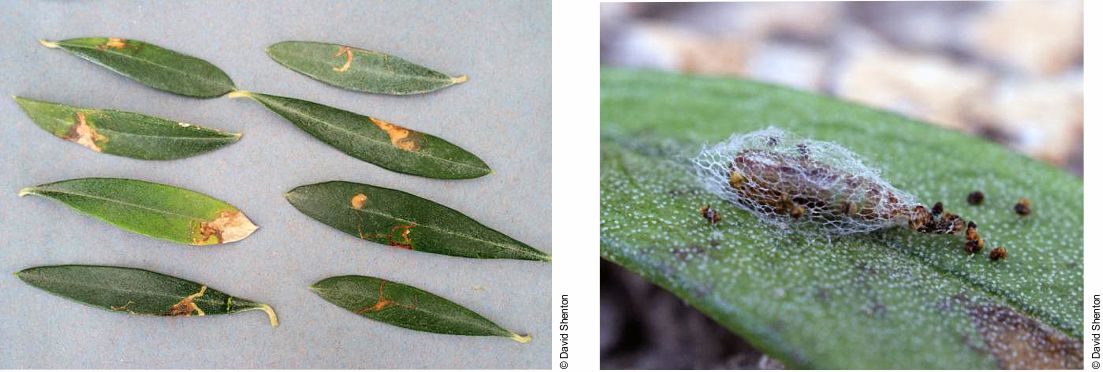
Damage
Anthophagous generation: The damage that this generation produces is very relative and difficult to assess. One larva can destroy 20–30 flowers, but on the olive tree out of every 100 flowers only 2-3 olives ripen.
In addition, the olive tree compensates for the fallen flowers with a greater number of olives ripening.
Only in the case of low flowering and a high population of Prays oleae can there be a significant decrease in production.
Carpophagous generation: It is the most harmful in causing the olives to fall. The first fall (in June) is very difficult to assess because the tree compensates for it by increasing the size of the remaining olives.
On many occasions, when harvesting, this can even be beneficial.
The second fall (in Autumn), however, is very important because the olive is already developed and the tree does not have time to compensate.
Phyllophagous generation: In adult trees it does not cause any economic damage. Only in garden nurseries and growing trees it is able to destroy the buds and subsequently affect the future of the olive tree.
